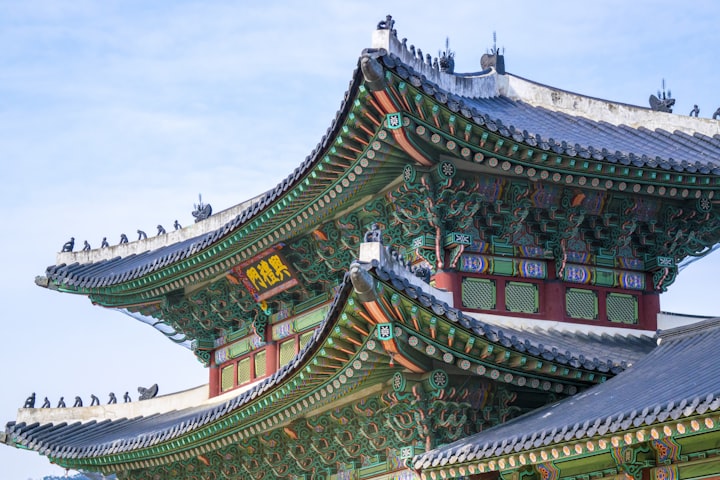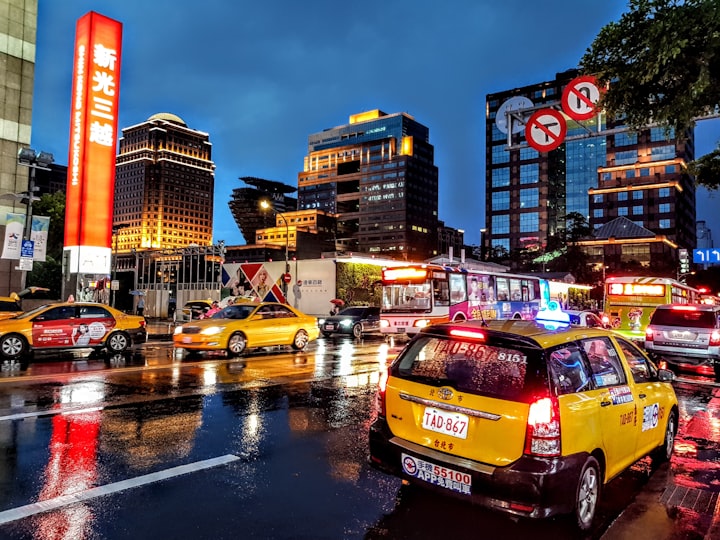Greetings from the foreigner
Travel opens a window into South Korea

In the spring of 2012, our daughter moved to South Korea.
She had a one year contract to teach English to small children. We always told our kids if they moved somewhere interesting we would visit them, so we decided to go.
Right away, we booked our flights.
Neither of us had ever been to Asia and we were excited. We were also a bit nervous. Most of our friends had taken a year after high school and visited Europe, but we were busy working, making our way in the world. It was our time.
We did a lot of research and planning. There were vaccinations to get and decisions to make about what to pack.
The best advice we heard was travel light.
We settled on one small piece of carry-on luggage each. It limited what we could pack, which made some of the other choices easier. There wasn’t room for anything extra which was a good thing.
Next, I focused on our arrival.
Many people in Korea speak limited English so I decided to learn how to communicate.
I tried to learn the written language. It’s called Hangul and is extremely logical. Hangul was created by King Sejong. After a lot of practice, I learned how to sound out written words.
The trouble was, I had no idea what the words meant!
Hello and Thank-you are universal.
You-Tube is an amazing tool.
I watched several videos and learned how to say hello and thank you in Korean: ann-yeong-haseyo and gam-sam-needa.
The language was so different to my ears. It was tonal and melodic so I learned to sing the phrases.
I understood pronunciation was very important so I watched a lot of different videos. It was really hard to remember longer bits so I repeated them over and over again. I added movements; folding my hands together and bowing for thank you and waving my hand hello.
It was the best thing I could have done.
Because we weren’t experienced travelers, we were unsure what to expect. Our flights took us to the nearest international airport, which was in Busan, a small city of three and a half million people.
Then we found the Love Hotels.
When we researched accommodation in the area, we noticed a lot of places were considered ‘love hotels’. I immediately imagined a seedy hotel in the downtown eastside of our city, where rooms could be rented by the hour. You know the type. It was one of my many misconceptions.
Hotels in parts of S Korea are less for tourists than for locals. Families live together in small apartments so there is very little privacy for couples.
That’s where the ‘love hotels’ come in. Two people can spend time alone away from their relatives at home. You can drive your car up to the entrance of the hotel without being seen as there are screens hanging between the street and the entryway.
The Angel Hotel had good reviews online and was close to the subway so we booked a room. We planned to be on our own for a few days before our daughter would join us and together we would travel to her apartment.
We landed after a long flight and disembarked, armed with our two Korean phrases: Hello and Thank You.
The first taxi ride is always an adventure.
In the taxi line up, we found a driver who seemed to know where our hotel was. That was not the case.
When we arrived in Seomyeon, he rolled down the window and started shouting at people.
We realized he was asking locals where the hotel was. Later we learned that addresses mean very little to most people in Korea and reading maps is not a common skill, so drivers often used this technique.
Seomyeon is a commercial hub and busiest area in Busan; without realizing it, we had arrived in the centre of the action.
We slept until early morning local time. The waterfront was a short subway ride from our hotel, so we planned to visit the large fish market.
Jet lag is an interesting state of being.
You think you’re functioning but find yourself unable to keep track of things. It’s a bit like sleepwalking underwater.
We entered the street and it was like stepping into a stadium filled with speakers and flashing lights. There were neon signs and colored banners covered in Korean writing on every surface of the buildings. Car horns honking, scooters whizzing by and music was blended together in a confusing jumble.
As we walked a couple of blocks away from the hotel, we quickly became disoriented. The direction of the streets was irregular and all of the stores and signs were unfamiliar. There was no English on any of the signs and there was so much new information that it was difficult to remember a familiar sight. We couldn’t see the subway entrance in the confusion.
Turning around, we retraced our steps and luckily made our way back to the hotel where we could begin again.
This time we found the metro entrance and climbed down a long flight of stairs to find a maze of shopping in an underground city. We followed the symbols for the metro and eventually found it. There were both Korean and English on the maps, and we figured out how to purchase a ticket. We got on the subway and went to the waterfront station: Jalgachi.
A visit to the fish market.
At Jalgachi station there were outdoor tented fish stalls with vats of different kinds of seafood, and many unfamiliar creatures swimming in glass-walled bins. The middle-aged ladies gossiped while they kept a close watch on us as we wandered through the narrow aisles. They giggled as we nodded and I greeted them with a tentative ann-yeong-haseyo. When they responded, I was relieved they understood me.
Eventually, we found a restaurant and sat at a table and a tentative waitress brought us menus. Luckily there were a lot of pictures, so we ordered by smiling and pointing at things that looked good.
We ended up eating a raw seafood dish which was very delicious. I’m sure it wasn’t the smartest choice but we were hungry and happily ate it all.
Busan was exciting and confusing at the same time.
We were the only non-Asian people we met during our visit and people spoke very little English, usually hello.
I would respond with ann-yeong-haseyo and gam-sam-needa.
Having exhausted both our vocabularies, we would smile and giggle at each other.
Later, we walked along the waterfront, smiling and nodding at people as we met. Their curious stares followed us and we found a bench to rest on. A group of young students wearing school uniforms passed by, the girls with their hand over their mouth, hiding a shy smile.
One of the young men was the first to approach.
‘ann-yeong-ha-seyo’ he said tentatively.
When we replied and responded with smiles, his confidence grew.
‘Hello’, he said.
‘Hello,’ we replied, nodding.
‘How are you?’ he said.
‘Fine, thank you, how are you?’
Having exhausted our mutual English, there was an awkward smiling silence.
Selfies were a frequent request.
Then he indicated that he would like to take a selfie with us. When we agreed, we were quickly surrounded by young people, eager to take a photo with the ‘foreigners’.
It might have been our welcoming attitude or the fact that we looked so different, but it was a common request during our travels in Korea.
If you enjoyed this story, send me a tip so I can write another one.
Or share it on social media. Your recognition means a lot to me.
This story also appears on Medium by Tree Langdon, the author.
About the Creator
Tree Langdon
Get an idea, a new word and a question.
For more, read my bio here.






Comments
There are no comments for this story
Be the first to respond and start the conversation.